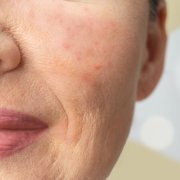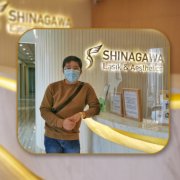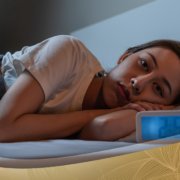Are You In Your 50s And Still Getting Acne? What Can You do?
Many think acne is predominantly a teenage condition, but it actually peaks at two times in our lives.
We see a lot of acne in the teen years with the first rush of hormones into the system. But we also see acne affecting people in their 40s and even 50s, often around the mouth. Again, later outbreaks are related to hormones (from menopause, for example).
When you come to see a dermatologist, they will assess your acne. If it appears to be hormone-related, we may treat it with hormonal therapy, prescribing common oral contraceptive drugs or a drug like spironolactone.
However, the majority of acne can be controlled with topical medications, including:
- Benzoyl peroxide-based creams or gels.
- Topical antibiotics such as clindamycin lotion.
- Topical vitamin A preparations, such as tretinoin cream or adapalene gel.
Guide to Using Benzoyl Peroxide for Acne
If you’re sensitive to other acne treatments, you should talk to your doctor before using benzoyl peroxide. Gels or creams with 10 percent or less benzoyl peroxide are available. Since benzoyl peroxide dries out the skin, it is best to start with a lower concentration (2.5 percent, for example) and let your skin get used to it.
Research shows that 5 to 10 percent benzoyl peroxide is safe and effective for treating acne, but it may take a few weeks for your skin to adjust to the product at that concentration. It has been shown that using benzoyl peroxide to treat acne while pregnant is bad for the baby.
Some over-the-counter products that contain alpha or beta hydroxy acids (like glycolic acid or salicylic acid) are also very helpful.
Also, as stress will definitely aggravate any skin condition, modifying the stress in your life as much as you can and adopting healthy stress management habits will help your skin condition.
Whatever age you may be, we can help you deal with your stubborn acne problems!
Schedule a consultation with our skin experts! Call our Patient Care Lines: (+632) 7-368 5238 l (+63) 917 862 7454 l (+63) 921 217 0517 for inquiries, questions, and appointments or talk to our consultants via LiveChat here on our website https://shinagawa.ph.
📱 Instagram: https://instagram.com/shinagawa_ph/




